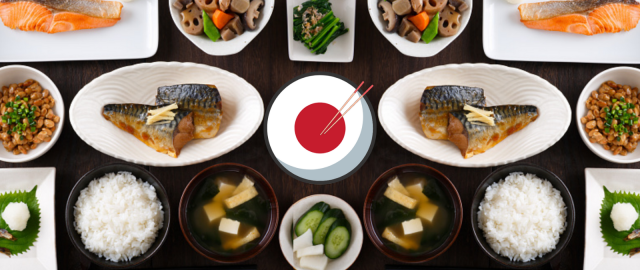As COVID-19 disrupted our lives over the past two years, there is one country that has been doing better than others since the beginning: Japan. In fact, on July 4, 2020, while the Wuhan-Alpha variant raged across the globe and vaccines and treatments were not yet available, the BBC published an article called, “Coronavirus: Japan’s Mysteriously Low Virus Death Rate.” And most recently, on January 14, 2022, The Japan Times said the country’s low death rates may have something to do with “intestinal bacteria.” And what helps have intestinal bacteria? Good food choices!
We’re not saying that food alone can cure COVID-19, and please, if you have any questions regarding COVID-19, please reach your doctor or a health professional. We’re not doctors nor nutritionists, but we have been curating hundreds of Japanese school lunch menus and we’ve noticed a few superfoods that appear regularly in Japanese school lunches that can surely help our bodies.
Here are the top superfoods that can be regulalry found in Japanese kids’ lunches:
Fish & Seafood
Fish and seafood are part of a well-balanced healthy diet, as they are major sources of omega-3 fats and are also rich in other nutrients such as vitamin D. Eating fish or taking fish oil are good for the heart and blood vessels and the American Heart Association recommends eating fish at least two times per week as part of a healthy diet.
The fish we most commonly find in the Japanese school lunch menus are mackerel/aji (horse mackerel), salmon, tuna, hoki, jako (baby sardines), shrimp and squid. Whether it’s deep-fried, in salads, in omelets, fish and chips or fish burgers, kids in Japan eat a variety of seafood for lunch.
Seaweed
In a salad, in a stew, in a hearty miso soup, or mixed with rice, seaweed is everywhere in the Japanese school lunch menus.
Ginger
Ginger has anti-inflammatory properties that may help in removing toxins from the respiratory tract. With its spicy and warm taste, consider adding a tiny bit of ginger into soups, stews or over plain rice. Another way to use ginger? Add it to warm water with lemon, honey, and thyme—it’s so good when it’s cold outside, plus it helps when we have a sore throat.
Garlic
Several studies mention that garlic may help decrease inflammation and boost immune function. Another impressive benefit of garlic is that garlic is a natural blood thinner and helps against blood clotting. Our recommendation for school lunches? Slice it or crush it with the help of a garlic press, or sprinkle a little bit of garlic powder into your soups and over your sautéed veggies.
Natto
Natto are small fermented soybeans that look like tiny cannellini beans. It seems it is actually an event better superfood than garlic for preventing blood clots! Full disclosure: kids may not like the texture (they actually have a very cheesy, slimy, stringy texture, so the best way to eat natto is to pair it with rice) and the smell (natto smell like old cheese!). But it may be worth the try!
Seafood, seaweed, ginger, garlic, and natto are just some of Japan’s superfoods that can easily incorporated into our everyday meals, can certainly help our gut health and who knows, maybe even help with some of the side effects from COVID. Looking for more inspiration? Explore Japanese lunch ideas on Teuko.com.











